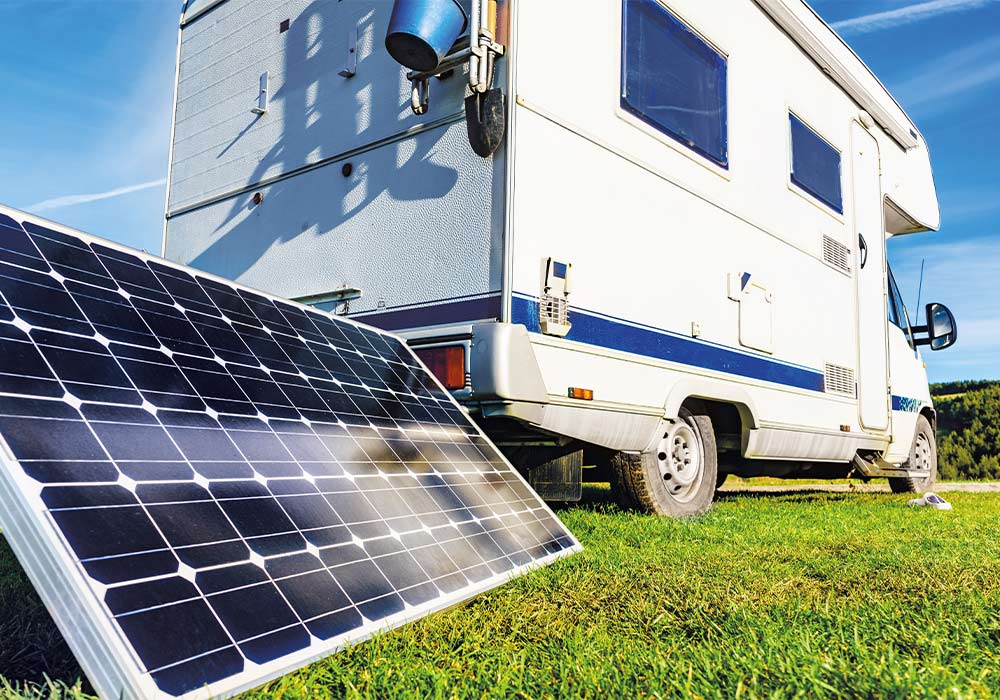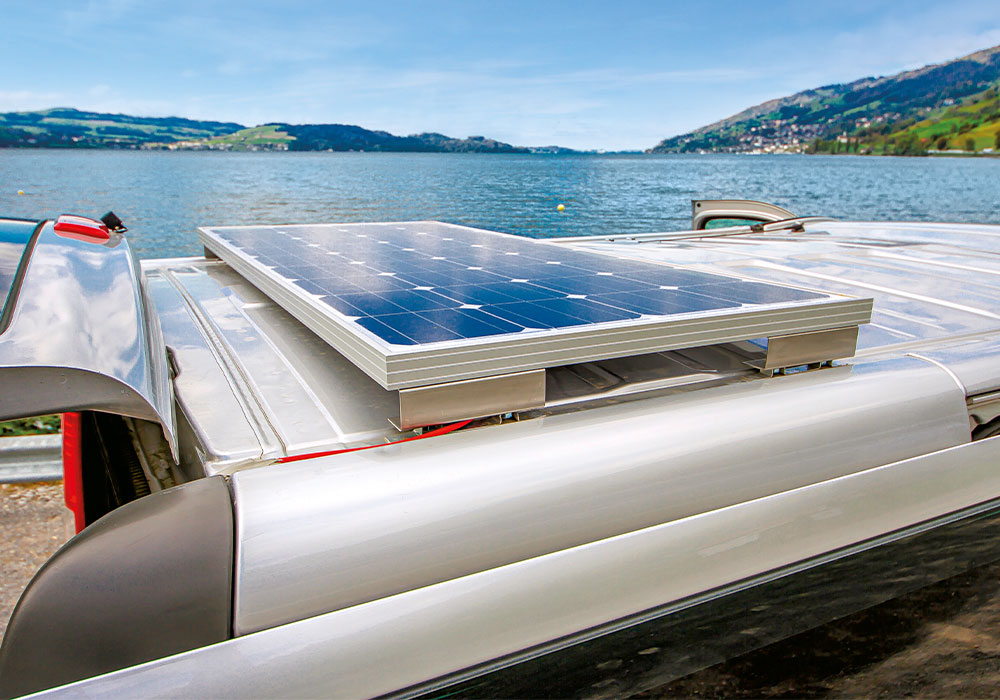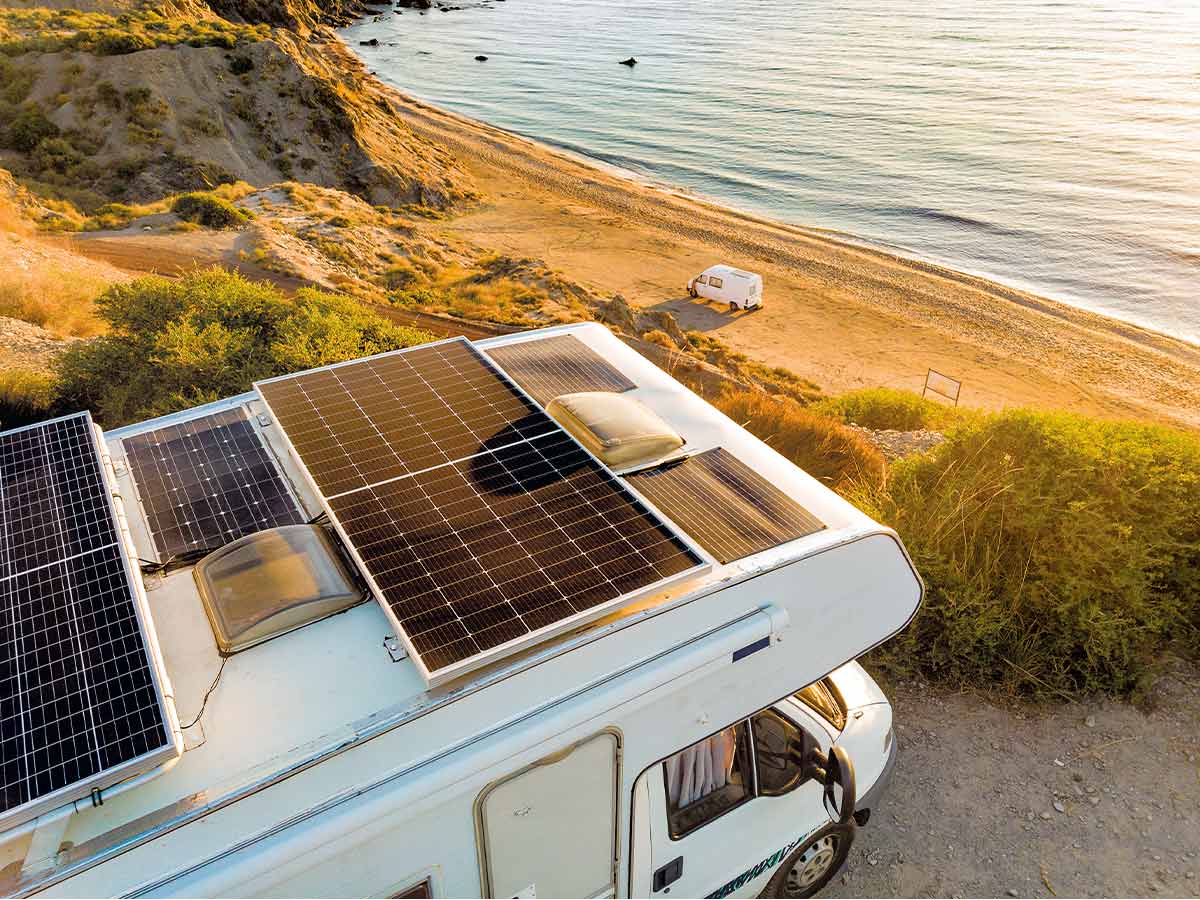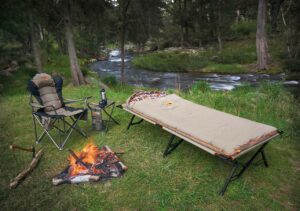For many, one of the joys of travelling in an RV is to park up in a beautiful spot and enjoy the surroundings for a few days. Often, these beautiful places are remote and off-the-grid. As such, a solar power system that allows being off-grid for several days or weeks — or even permanently – is a must-have for many RV-ers.
In this month’s Getting into Gear column, Lisa Jansen looks at the different components of a solar power system and key considerations for each, as well as examples of what type of system might work well for different types of travellers.
For such a specialist area, we’ve enlisted the help of two RV solar power experts: Wayne Hunt and Fiona Kerrigan New from Motorhome Solar.
Before we get into it, it’s important to point out that all information in this article should be considered a guideline only. Travellers have different needs, and sometimes, something seemingly small can make a big difference. Therefore, we recommend consulting an RV solar expert to get recommendations tailored to your needs.
The Components of a solar power system

There are five core components to a solar power system for an RV.
Solar panel
The most obvious component is, of course, the solar panel. In simple terms, the more watts the solar panels have, the more power. However, there are a few nuances to consider. Solar technology has been developing fast in the last decade and continues to do so. New panels today are significantly more efficient than those produced five years ago, and chances are this trend will continue. As Wayne Hunt explains, “Two panels with the same wattage might produce vastly different amounts of power if one is a few years older than the other.”
There are also quality differences. Solar panels come with an efficiency rating that shows the amount of sunlight that gets converted into electricity (under ideal conditions). Currently, the most efficient solar panels available have an efficiency rating of between 20.60% and 22.80%. This is likely to go up further in the coming years.
Battery
Next, you need batteries to store the power. There are two main options: AGM and lithium. A whole article could be written about the differences and pros and cons of each, but in a nutshell, AGM batteries are cheaper to purchase while lithium batteries tend to last longer.
Fiona Kerrigan New explains, “On average, lithium batteries cost 1.5 to 2 times as much as AGM batteries, but they last about five times longer.”
As a result, for those planning to keep their RV for many years, lithium is often the better choice. On the other hand, for those who plan to sell their RV within a few years and want to spend less up front, AGM is likely the better option. However, this is a simplified view of both battery options, and it’s a good idea to do more research before making a decision.
Battery capacity is measured in ampere-hours (AH) and reflects the number of amps a battery can supply over time. For example, if you have an appliance that uses five amps per hour,
you could run it for 20 hours with a 100Ah battery.
The size of the battery you need comes down to what appliances and devices you want to use for how long each day and how many amps each of those appliances and devices needs.
Solar controller
Another important element of a solar power system is the controller. There are two types: Pulse Width Modulation (PWM) controllers and Maximum Power Point Tracking (MPPT) controllers. PWM controllers regulate solar panel output by periodically interrupting the flow of electricity to the battery, maintaining a fixed voltage level. They are cheaper than MPPT controllers but also less efficient, particularly in situations with varying sunlight and temperature conditions.
On the other hand, MPPT controllers are more sophisticated and dynamically adjust the voltage and current to maximise power transfer from the solar panels to the battery. Though more expensive, they excel in extracting energy under low light or non-ideal conditions, offering up to 30% higher efficiency compared to PWM controllers.
While a small device, the solar controller can make a big difference. Wayne explains, “It’s often the first thing we look at when someone comes to us needing more power. Sometimes, simply switching out a PWM controller for an MPPT one provides the additional power required.”
Shunt

A shunt is a less talked about aspect of a solar system, and it’s not a must-have, but it can be beneficial. A shunt is an electrical device that acts as a precise current sensor, providing real-time data on the electricity passing through it.
In an RV solar set-up, shunts offer several key benefits. Firstly, they enable accurate monitoring of power consumption. Secondly, shunts assist in battery health management by monitoring charging and discharging currents. This information helps prevent overcharging or deep discharging, prolonging the lifespan of the RV’s battery bank.
Wayne compares the shunt to a fuel gauge in a car and says, “We always recommend adding a shunt to the system. After all, you wouldn’t drive your RV without a fuel gauge, so why would you drive around without knowing what level your batteries are at. It’s not very expensive but provides many benefits.”
Inverter
Inverters are an optional component of a solar system. However, they are needed for anyone wanting to run standard household appliances, such as TVs, slow cookers, or laptop chargers, of their solar system. Without an inverter, you are limited to devices that run on 12 volts.
Who needs what?
The next big question is who needs how much solar and battery capacity. Unfortunately, there’s no easy answer.
As Wayne puts it, “Everyone is different. Even two couples who, at first glance, have very similar lifestyles on the road, can have very different power requirements when you look at it in detail. That is why it’s so important to work out exactly how someone wants to live and travel in their RV before making a recommendation.”
However, with the help of Wayne and Fiona, we’ve put together some high-level recommendations for different types of travellers to give you an idea of what kind of solar and battery capacity you might need. These suggestions should be seen as a rough guideline and starting point only.
| PERSONA | SOLAR NEEDS | BATTERY | INVERTER |
|---|---|---|---|
| The Minimalists A person or couple travelling in a small camper who only needs the basics, such as lights, water pump, fridge, and maybe a diesel or gas heater in winter. Like to be off-grid as much as possible but happy to stay at campgrounds occasionally. Travel year-round, but mainly shorter trips in winter. | Minimum of 300 watts. Possibly less if using a gas/three-way fridge. | Minimum of 100AH | Depends on what appliances are being used |
| The Campgrounders Stay at campgrounds most nights, with the odd off-grid night (or two) in between. Want to be able to use TV, internet, charge devices, etc. when off-grid for a night or two. Travel mostly in summer. | General range of 200 to 300 watts | Range of 100 to 200AH | Depends on appliances are being used while off-grid |
| The Luxury Lovers Travel in a modern caravan or motorhome. Don’t want to make sacrifices. Want the RV to be just like home, including the coffee machine, hairdryer, electric toothbrush, and more. Travel mostly in summer and stay at a mix of campgrounds with power and off-grid campsites. | Starting around 600 watts but can be significantly more | Starting at 200 to 300AH for AGM batteries or 100 to 200AH for lithium | General guideline of a 1600 VA |
| The Off-Grid Full-Timers Travel in a larger motorhome or caravan. Love being off-grid. Only stay at a campground with power if forced to. Want to be able to stay in one place for several weeks without running out of power. Want to live comfortably but don’t need lots of luxury (i.e. no hairdryers needed). | Starting around 800 watts but can be significantly more | Starting at 300 to 400AH for AGM batteries or 200 to 300 AH for lithium | Range between 2000 and 3000VA |
| The Roaming Family A family travelling in a large caravan or motorhome. Prefer off-grid, but happy to use campgrounds when needed (especially in winter). Have a simple lifestyle but need to be able to keep the kids entertained (especially on rainy days): TV, computers, video games, devices. Travel year-round and often for long stints. Tend to move around, only staying in one place for a few nights at a time. | Guideline of around 1000 to 1200 watts | Starting point of around 300AH for AGM batteries or 200AH for lithium | Around 1000 to 1200 VA inverter for various loads |
Additional considerations
Most experts, including Wayne and Fiona, recommend having at least two ways to charge your batteries just in case there is an issue with one. The second option besides solar could be a generator, the ability to connect at a campground or charging via an alternator while driving.
The fridge is often the most power-hungry appliance in an RV. As such, having a gas fridge vs a compressor fridge can make a big difference and significantly reduce the power requirements (though the use of other appliances can easily bring it back up). When you travel can also make a big difference. People who travel more in winter generally need more solar and battery capacity.
Where you spend most of your time can also matter as some parts of New Zealand get a lot more sunshine hours than others.
It can be tricky to update and upgrade existing solar systems, so if you think you might need more capacity in the future, it’s best to plan for that from the get-go.
As you can see, there’s a lot to consider when it comes to solar power systems, and a lot comes down to individual preferences and requirements. So, while articles like this are useful to get a general idea, it’s always a good idea to consult with an
RV solar expert when designing your system to ensure you can enjoy your perfect RV lifestyle without having to worry about running out of power.






